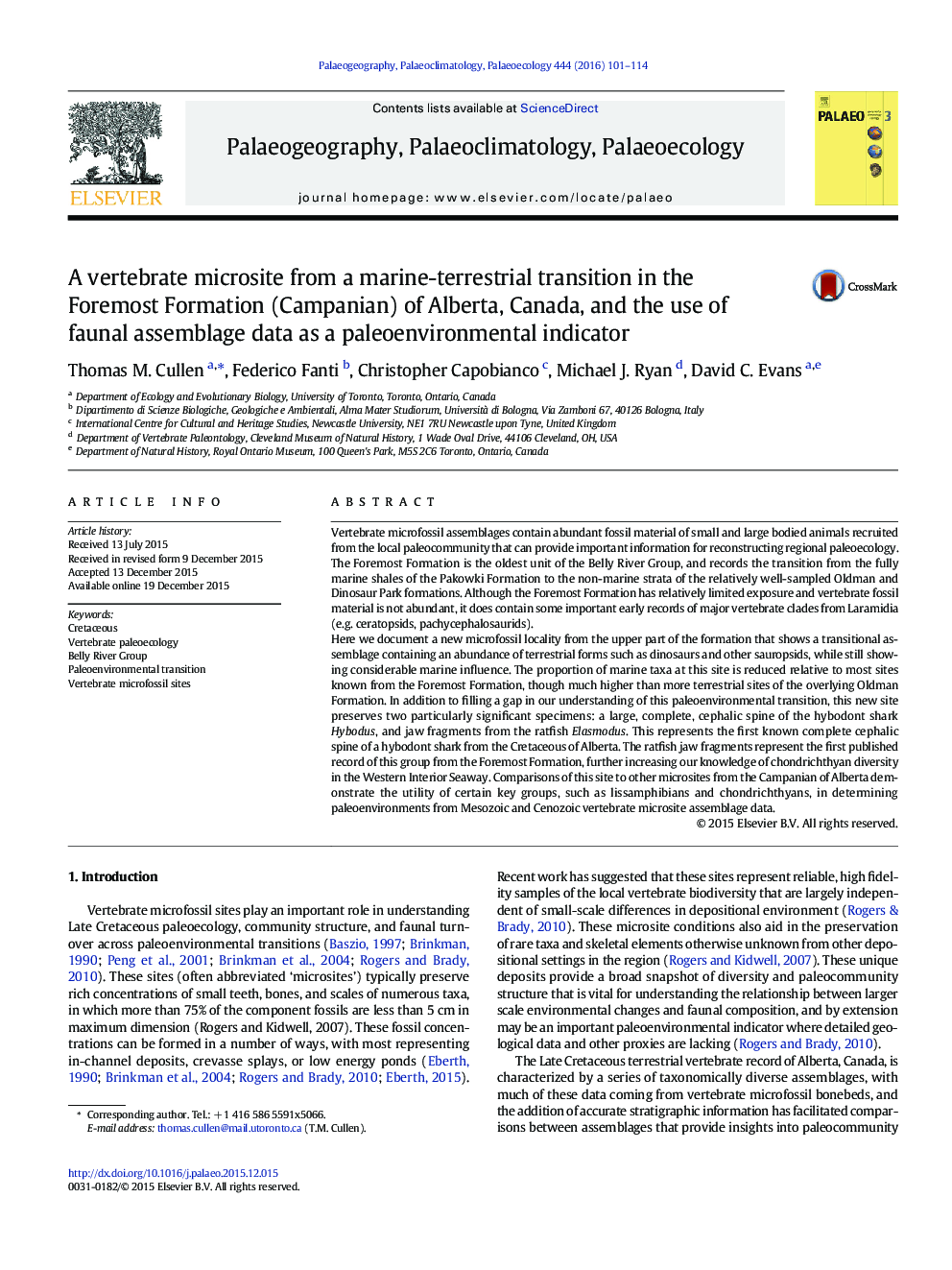| کد مقاله | کد نشریه | سال انتشار | مقاله انگلیسی | نسخه تمام متن |
|---|---|---|---|---|
| 6349249 | 1622147 | 2016 | 14 صفحه PDF | دانلود رایگان |

- A vertebrate microsite from a poorly known marine-terrestrial interval is described.
- The site shows a transitional fauna consistent with its paleoenvironmental context.
- Rare chondrichthyan material represents first records for the Foremost Formation.
- Inter-site comparisons show utility of key taxa as paleoenvironmental indicators.
Vertebrate microfossil assemblages contain abundant fossil material of small and large bodied animals recruited from the local paleocommunity that can provide important information for reconstructing regional paleoecology. The Foremost Formation is the oldest unit of the Belly River Group, and records the transition from the fully marine shales of the Pakowki Formation to the non-marine strata of the relatively well-sampled Oldman and Dinosaur Park formations. Although the Foremost Formation has relatively limited exposure and vertebrate fossil material is not abundant, it does contain some important early records of major vertebrate clades from Laramidia (e.g. ceratopsids, pachycephalosaurids).Here we document a new microfossil locality from the upper part of the formation that shows a transitional assemblage containing an abundance of terrestrial forms such as dinosaurs and other sauropsids, while still showing considerable marine influence. The proportion of marine taxa at this site is reduced relative to most sites known from the Foremost Formation, though much higher than more terrestrial sites of the overlying Oldman Formation. In addition to filling a gap in our understanding of this paleoenvironmental transition, this new site preserves two particularly significant specimens: a large, complete, cephalic spine of the hybodont shark Hybodus, and jaw fragments from the ratfish Elasmodus. This represents the first known complete cephalic spine of a hybodont shark from the Cretaceous of Alberta. The ratfish jaw fragments represent the first published record of this group from the Foremost Formation, further increasing our knowledge of chondrichthyan diversity in the Western Interior Seaway. Comparisons of this site to other microsites from the Campanian of Alberta demonstrate the utility of certain key groups, such as lissamphibians and chondrichthyans, in determining paleoenvironments from Mesozoic and Cenozoic vertebrate microsite assemblage data.
Journal: Palaeogeography, Palaeoclimatology, Palaeoecology - Volume 444, 15 February 2016, Pages 101-114